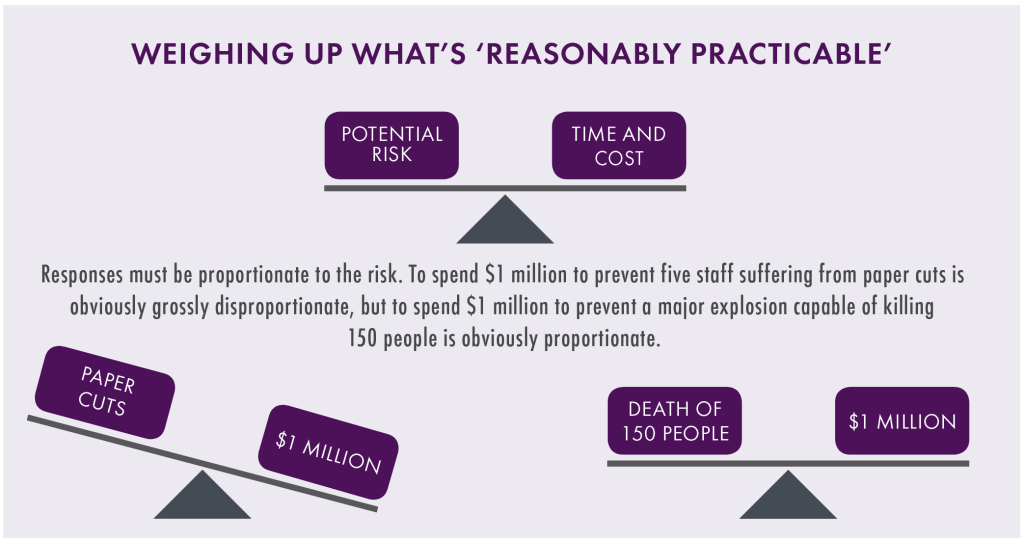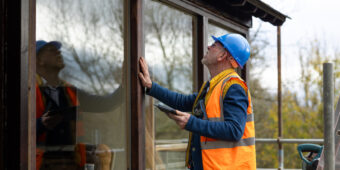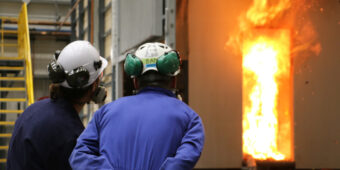Reasonably practicable
21 Mar 2017, Featured, Prove Your Know How, Safety

WorkSafe offers insight into what “reasonably practicable” actually means when it comes to health and safety in a small business
Small to medium-size businesses (SMEs) make up about 97% of businesses in New Zealand and employ one of every three New Zealanders. Since the Health and Safety at Work Act 2015 (HSWA) became law almost two years ago, many of these same businesses have been trying to determine how their liability has changed with regards to health and safety.
Many duties under HSWA apply ‘so far as is reasonably practicable’. It’s an important concept that involves doing what is reasonably able to be done to ensure people’s health and safety under the given circumstances. However, it has given rise to a number of myths.
COMMON MYTHS
Health and safety reps are now compulsory.
Wrong: Only for businesses with 20 or more employees.
I can’t use a ladder at all when working at height.
Wrong: The law doesn’t specify heights at which you should or shouldn’t use a ladder, but it does specify that you must use equipment appropriate to the task. Ladders should be used for low-risk, short-duration tasks, with three points of contact maintained to prevent a person slipping and falling.
If a worker gets even a minor injury, it has to be reported to WorkSafe.
Wrong: Under the new law, you must notify us when certain work-related events occur – these are called notifiable events. A notifiable event is when a person dies, is seriously injured or becomes seriously ill as a result of work.
SO WHAT DOES REASONABLY PRACTICABLE MEAN?
The term ‘reasonably practicable’ appears throughout the Health and Safety at Work Act 2015 (HSWA). ‘Reasonably practicable’ is used to qualify duties to ensure health and safety. There is no such thing as zero risk. It’s important to note that the person conducting a business or undertaking (PCBU) is not expected to guarantee the safety of their workers and others from work activities.
Instead, PCBUs are held to a ‘reasonably practicable’ standard.
It is a judgement call that the PCBU must make. It involves weighing a risk against the resources (time and cost) needed to manage it. Here are a few things to consider:
- Reasonably practicable means you don’t have to do everything humanly possible; you do what is suitable in the circumstances to first try to eliminate the risk. If the risk can’t be eliminated, then you minimise it.
- Just because something is possible to do, doesn’t mean it is reasonably practicable under the circumstances.
1. Before weighing up if something is reasonably practicable, you should first consider common controls for common risks.
If you follow industry standards or commonly accepted guidelines for carrying out a task (eg, common controls), then the likelihood is that you are already taking suitable actions to ensure health and safety. Where these are available, WorkSafe expects people to follow them under most circumstances.
Example: It is good practice to guard a guillotine to protect the operator from potential cuts or amputations.
This is the reasonably practicable control in most cases. If the guard cannot be used for a specific reason, then suitable actions need to be taken to ensure the operator’s safety while using it.
2. If there is no common control available or you choose not to use it, how do you decide what is reasonably practicable in the circumstances?
If there isn’t a common control for a risk, then you first need to evaluate the risk and the ways to control it. Lastly, you would consider the costs and whether they are proportionate to the risk.
All the relevant elements of the risk and how to manage it must be considered and weighed up, and a balance must be achieved.
On one side, you have the potential risk; on the other, you have the time and cost needed to control it. You need to balance the two sides to achieve a result that provides the highest protection reasonably practicable in the circumstances.
Responses must be proportionate to the risk. To spend $1 million to prevent five staff suffering from paper cuts is obviously grossly disproportionate, but to spend $1 million to prevent a major explosion capable of killing 150 people is obviously proportionate.
If you are not using a common control to manage the risk, then you should think about these factors:
a) How likely is the risk to occur?
- The more likely a risk is to occur, the more should be done to eliminate or minimise the risk.
- Your response should be proportionate to the risk.
b) How severe is the harm that might result from the risk?
- More should be done to eliminate the risk if death or serious injury is a possible or likely result.
- The greater the potential harm, the greater the response required.
c) What you know or ought to reasonably know about the risk and the ways of eliminating or minimising it.
You are expected to find out if there are any ways to eliminate or minimise the risk. If you are unsure, you can do so by carrying out a risk assessment, talking to workers, other PCBUs in the industry and health and safety representatives, and looking at health and safety records and processes of others will help inform decisions. The WorkSafe website is also a valuable resource.
d) The availability of the control measures, and how suitable they are for the specific risk.
How a risk is eliminated or minimised will depend on the situation, type of work, work environment etc. This is where you will need to apply judgement to figure out the best actions to take.
e) As a final step, consider if the cost of setting up control measures is grossly disproportionate to the risk.
Note: Cost is rarely an excuse for not setting up a necessary control for a risk. However, below is an example of where it can affect a decision.
Example: It is possible to helicopter scaffolding into a remote inaccessible area of the bush to complete repairs on a small hut. However, it may not be reasonably practicable to do so.
The high cost of the helicopter and flying in certified scaffolders to set up and take down the scaffolding compared to the risk to workers is disproportionate.
Instead reasonably practicable alternatives may be more suitable in the circumstances to control the risk (eg harnesses).
Register to earn LBP Points Sign in
2 Comments
Leave a Reply
You must be logged in to post a comment.





Awesome quiz
health and safety